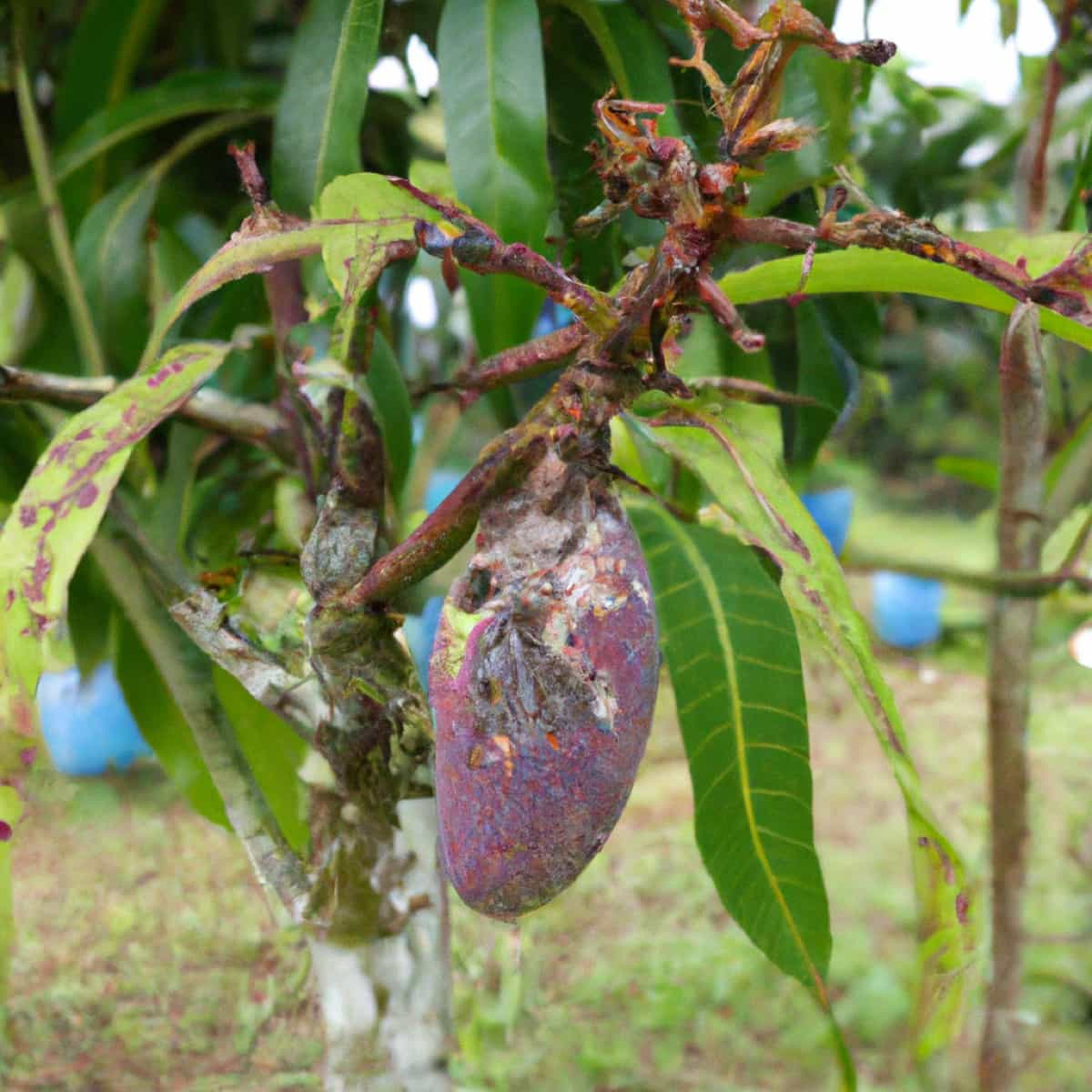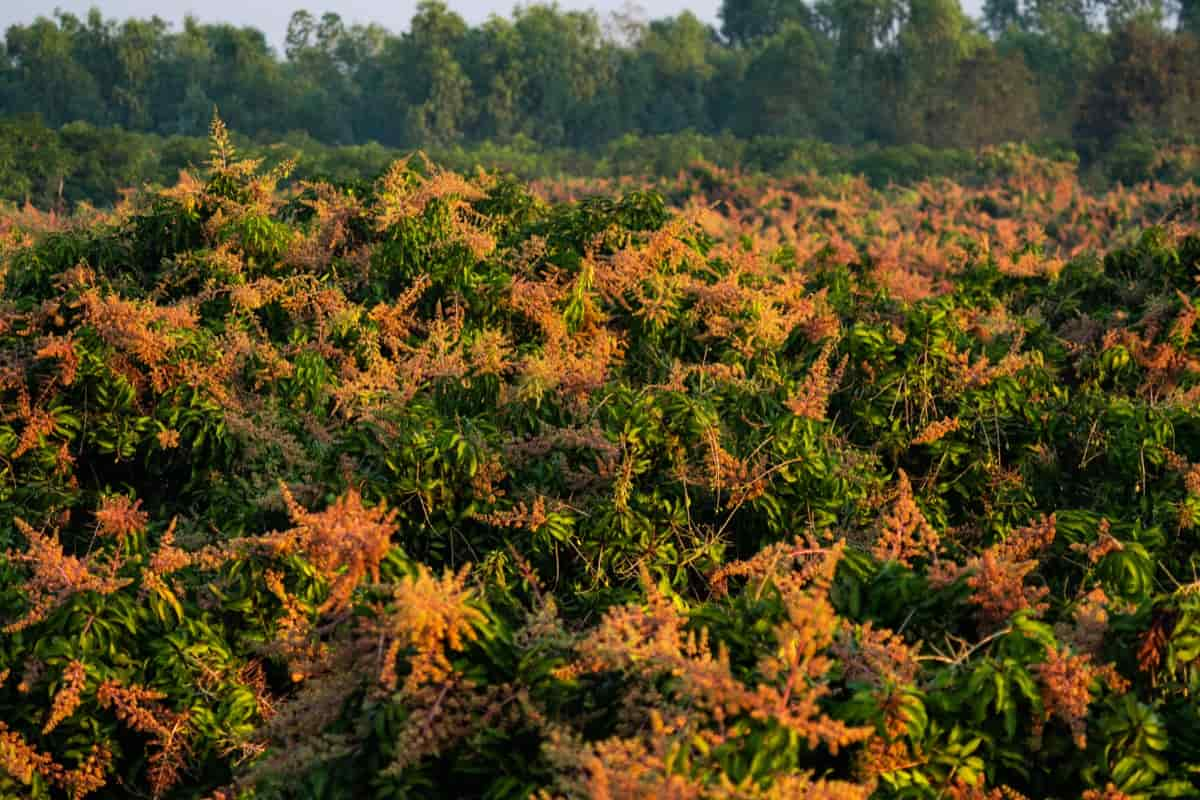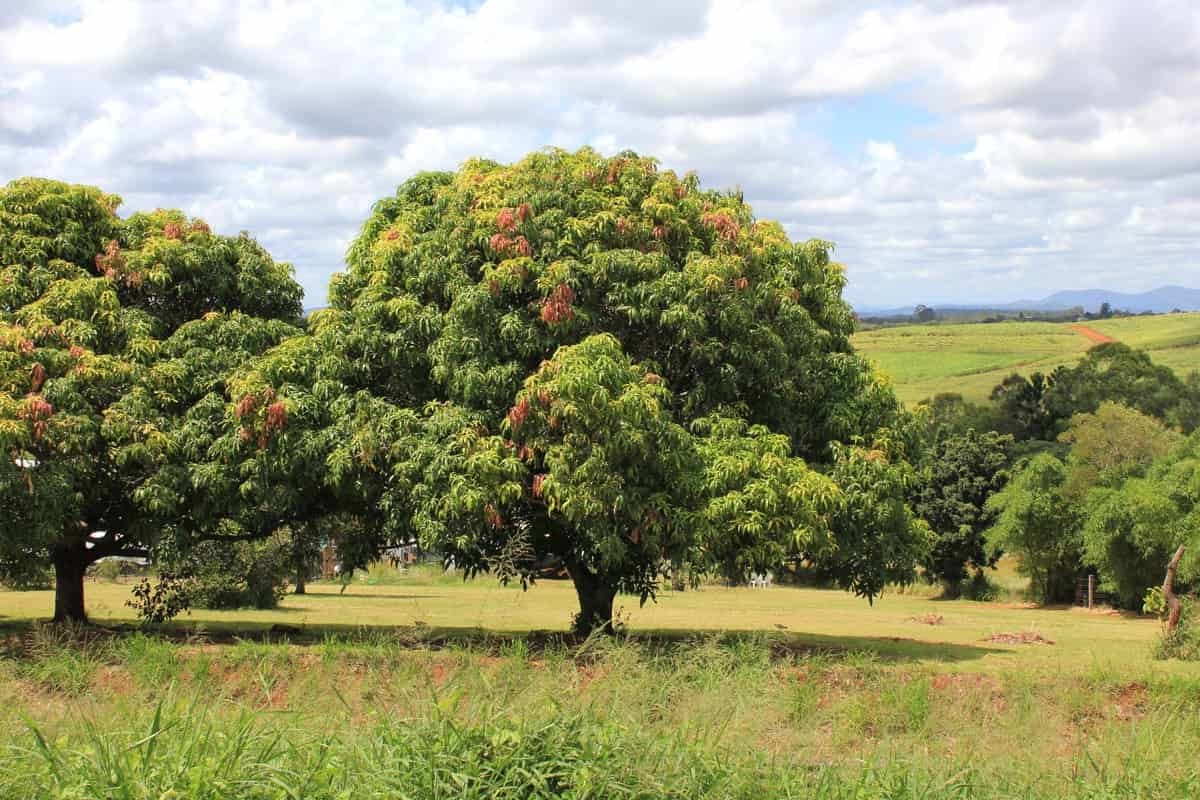The Mango Dieback Disease caused by the fungus Lasiodiplodia theobromae is a serious threat to mango crops worldwide. The fungus primarily infects stressed or wounded trees, such as those subjected to drought, insect damage, or pruning wounds. The pathogen enters the plant through the wounds and spreads rapidly throughout the plant, causing extensive damage to the vascular tissues. Mango Dieback Disease affects the quality and yield of mango crops and causes economic losses to farmers and the mango industry.

Effective management strategies are essential to control the spread of the disease and prevent its devastating effects on mango crops. To effectively manage this disease, it is important to understand its disease cycle, the mode of disease spread, and the best methods for controlling it. This article will provide an overview and discussion of the Mango Dieback Disease in Mango crops, including its symptoms, identification techniques, and control.
Mango Dieback Disease Management
The Causal Organism of Mango Dieback Disease
- Lasiodiplodia theobromae is a facultative saprophytic fungus that belongs to the Family Botryosphaeriaceae of Order Botryosphaeriales of the Phylum Ascomycota.
- The fungus is characterized by small, dark, flask-shaped fruiting bodies called pycnidia, which produce and release spores that can infect new plant tissues.
- The pathogen primarily infects stressed or wounded mango trees.
- It commonly survives in soil, plant debris, and infected plant tissues.
The Disease Cycle of Mango Dieback Disease
The disease cycle of the Mango Dieback Disease, Lasiodiplodia theobromae, in Mango Crops begins when the pathogen enters the plant through natural openings, such as stomata and lenticels, or wounds caused by pruning, insect feeding, or other mechanical injuries. Once inside the plant, the fungus colonizes the vascular tissues and causes extensive damage, leading to wilting, dieback, and, eventually, the death of the tree.
It produces a range of enzymes and toxins that facilitate its penetration and colonization of plants’ vascular tissues. As the disease progresses, symptoms such as wilting, leaf yellowing, and blackening branches and leaves become significant. It can also trigger the plant’s defense mechanisms, leading to further stress and damage. The fungus produces pycnidia in the infected tissues, which release spores that can infect new plant tissues or be dispersed to other plants by wind, rain, and insects.
The spores can infect nearby healthy tissues, causing secondary infections and further disease spread. The cycle repeats, and the fungus can survive in the infected plant tissues, soil, or plant debris, which is the source of primary inoculums until conditions are favorable for infection and disease development again. The disease is most prevalent in October and November.
Occurrence of Mango Dieback Disease in Mango Crop
- Location of Mango Dieback disease: This disease occurs in mango crops in India, South Africa, Bangladesh, Sri Lanka, Thailand, the Philippines, the United States, Mexico, Brazil, and Australia.
- Host range: The most common crops affected by Lasiodiplodia theobromae are mango, avocado, grapevine, citrus, papaya, tomato, eggplant, and ornamental plants.
Favorable Conditions for Mango Dieback Disease Spread in the Field
- Warm and humid conditions, with temperatures between 27-32°C and 50-90% relative humidity, and heavy rainfalls are ideal for spore germination and infection.
- The disease thrives in poorly drained soils or areas with standing water.
- Pruning injuries, insect damage, wounds, and other mechanical injuries are conducive to the disease’s spread.
- The nutrient deficiencies such as calcium, magnesium, and potassium weaken the plant’s defense mechanism making them more susceptible to Mango Dieback Disease.
- Overcrowded plants are also more susceptible to injuries, making them more vulnerable to fungal infection.
- Poor sanitation practices, such as inefficient removal of dead plant material or not removing fallen fruit, can create a favorable environment for the spread of the disease.
In case you missed it: Mango Grey Blight Disease Management: Symptoms, Treatment, Chemical, Biological, and Organic Control

Damage Symptoms of Mango Dieback Disease
- The disease is characterized by the sudden wilting, defoliation, and death of mango trees, with symptoms such as the drying and blackening of twigs, branches, and the leaves from top to downwards, giving an appearance of scorching by fire at the top.
- The dieback disease can be observed in the early stages by discoloration and darkening of the bark, especially at the terminals.
- The darkened area expands from the twigs and extends outwards along the leaf veins. The affected leaves turn brown and roll upwards.
- On slitting open, the twigs along the axis show internal tissue browning.
- The cambial and phloem tissues show brown discoloration and yellowish-brown gum exudes from the cells.
Percentage of Yield Loss Due to Mango Dieback Disease in Mango Crop
- The disease can cause 30% yield losses in the United States. In Mexico, yield losses are 10-70%. In India, the yield losses range between 40-50%. In Bangladesh, the losses are 40%. In China, a 20-60% yield loss is seen. In Thailand, it is between 30-60%.
- In Africa, yield losses are between 10-50%. In the Philippines, it is 20-90%. In Brazil, it is up to 60%. In Australia, the losses are 10-30%. The Economic Threshold Level is determined at 10-20% of disease incidence.
Cultural Control Measures of Mango Dieback Disease
- Proper sanitation practices should be followed, the fallen leaves, debris, and infected plant parts should be removed, and pruning tools should be cleaned.
- Mango trees require an adequate and balanced nutrient supply to enhance their disease resistance.
- Intercropping with other crops that have allelopathic effects or that produce volatile compounds that repel the pathogen can be employed to manage the disease.
- Proper irrigation management practices should be implemented to prevent water logging and to ensure that the soil moisture levels are optimal for plant growth.
- Pruning infected branches and twigs during the dormant season can reduce the spread of the disease. Removing the infected plant parts helps reduce the inoculum levels in the orchard.
Biological Control Measures of Mango Dieback Disease
- The biocontrol agents like Trichoderma spp., Bacillus spp., Pseudomonas spp., and Streptomyces spp. can be applied to the soil or foliage of mango trees to colonize the plant and suppress the disease.
- Mycorrhizal fungi can form a symbiotic relationship with mango trees, enhancing nutrient uptake and disease resistance.
Chemical Control Measures of Mango Dieback Disease
- Spray Azoxystrobin, Carbendazim, Mancozeb, and Tebuconazole as soon as noticed or during the susceptible stage to control the fungus spread.
- Prune the diseased twigs and Spray Copper Oxychloride or Bordeaux mixture to control the dieback disease.
Organic Control Measures of Mango Dieback Disease
- Chitosan, a natural polymer derived from chitin, a component of the exoskeleton of crustaceans, can be applied to the foliage or soil of mango trees to reduce the disease severity.
- Plant extracts such as Neem and Garlic oil are used as foliar spray or incorporated into the soil to reduce the pathogen’s population and manage the disease.
- Essential oils from plants such as clove, cinnamon, and tea tree inhibit the growth of the pathogen and reduce disease severity in mango crops.
- Collect the diseased parts and debris from the orchard and burn them far away from the field to control the disease spread.
Preventive Measures for Control of Mango Dieback Disease
- Select the stocks and scions for grafting from disease-free and healthy trees.
- Always use a sterilized and disinfected budding knife to prevent the spread of the disease to new trees.
- Regularly monitoring the crops for signs of disease will help to find and manage the disease early before it spreads.
- Planting mango varieties that are resistant to the fungus and avoiding planting the susceptible ones in high-risk areas can reduce the spread and severity of the disease.
- Put the grafts in dry areas and expose them to sunlight to reduce the disease’s spread.
In case you missed it: Mango Sooty Mould Disease Management: Symptoms, Treatment, Chemical, Biological, Natural, and Organic Control

Conclusion
The Mango Dieback Disease caused by Lasiodiplodia theobromae is a serious threat to mango crops worldwide, causing significant yield losses and economic damage. An integrated approach to managing Mango Dieback Disease is crucial for the sustainability of mango production and the protection of this important crop. Therefore, the disease can be managed using a combination of control measures, including cultural, biological, chemical, and natural fungicides.
- Beneficial Insects in Pest Management
- Natural Solutions for Pest Control in Flower Gardens
- Types of Fungicides Used in Agriculture
- Common Issues in the Fruit Development Stage of Pomegranate Farming
- Fruit Development Issues in Papaya: Easy Solutions and Treatment
- Soil-Borne Diseases and How to Protect Your Plants
- Practices to Prevent Disease Spread in the Garden
- From Wilted to Thriving: How to Treat Root Rot Naturally in Houseplants
- Natural Remedies to Cure Brown Spots on Fig Tree Leaves